Whether you’re drawn to the Great Smoky Mountains, finely crafted bourbon, or the state’s music scene, Tennessee is also home to breathtaking natural beauty and wildlife that’s worth checking out. That includes eight types of owls both common throughout the state and rare to see. Grab your binoculars and let’s dive into the different types, starting with the rarest owl.
Snowy Owl (Bubo scandiacus)
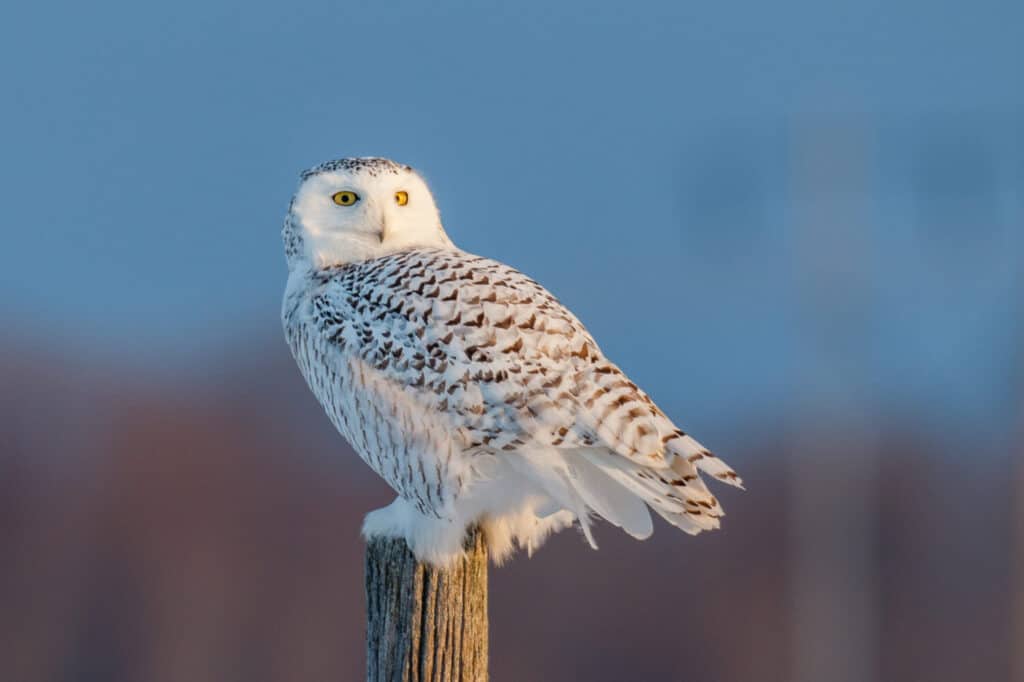
Every few years, hundreds to thousands of snowy owls will fly from their arctic mating ground to Canada and Northern American. When this happens, it’s referred to as an irruption year.
©Guoqiang Xue/Shutterstock.com
The rarest seen owl in Tennessee is the snowy owl. This is likely because they’re a very nomadic species, following their food sources so their habitat is ever shifting. They also mate in arctic climates, flying to milder environments in North America and Europe during the rest of the year.
If you’re lucky enough to spot a snowy owl, it’ll likely happen in the winter months, so bundle up! Snowy owls prefer open areas like grasslands or coastal dunes. Unlike other owl species, they are crepuscular, which means they’re active in the daylight hours.
And a fun fact about snowy owls: you probably won’t find them perched on a tree limb like other Tennessee owls. Snowy owls prefer to stay on the ground when hunting. This might be because they have unique nerve endings in the pads of their feet, which allow them to sense the vibrations of nearby rodents and prey.
Northern Saw-Whet Owl (Aegolius acadicus)

The northern saw-whet owl is the smallest bird of prey in North America. Males can weigh about the same as an
American robin
.
©Megan Lorenz/iStock via Getty Images
The diminutive size of the northern saw-whet owl and its reputation for shyness might be why it’s unusual to see this type of owl. To spot one, you’ll need to travel to the eastern part of the state in meadows and open woods. You could venture into the Great Smoky Mountains National Park to look for them, too.
You may hear a northern saw-whet owl before you see one, so keep an ear out for its repetitive and mechanical-sounding call. According to the Tennessee Wildlife Resources Agency, you can hear the calls on clear nights in the early months of the year, which is their mating season.
Long-Eared Owl (Asio otus)
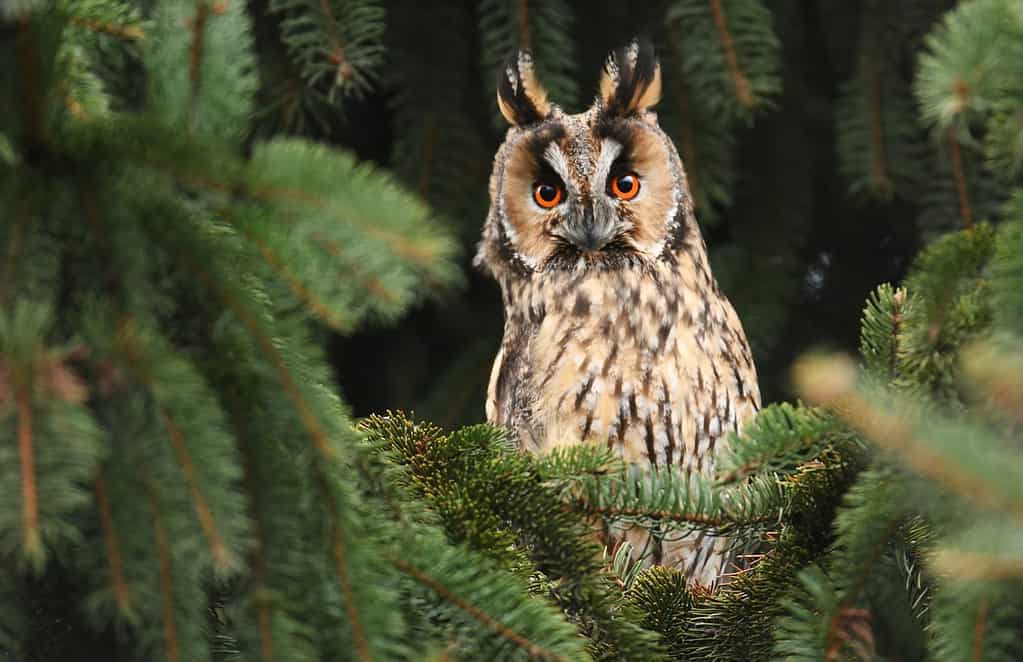
Like most owls, the
long-eared owl
doesn’t build its own nest but often uses old hawk nests or cavities in tree trunks as their home.
©Piotr Krzeslak/Shutterstock.com
The next owl on our list is the long-eared owl. With a loud hoot that can be heard about a mile away, you’re more likely to hear the long-eared owl before you see one. Their brown and black plumage serves as excellent camouflage in forested areas, where they typically spend their days. These nocturnal hunters often glide over open fields and grasslands in search of prey.
Short-Eared Owl (Asio flammeus)
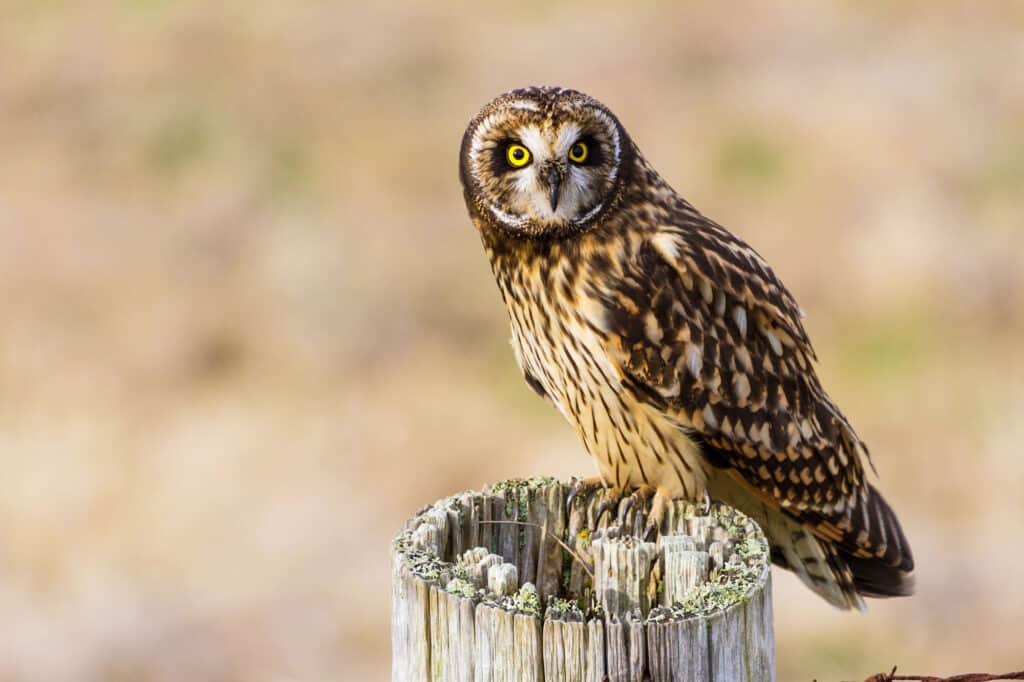
The short-eared owl has been found everywhere except Australia and Antarctica.
©iStock.com/Devonyu
You might have better luck spotting the short-eared owl around dusk in the winter. This is when they like to hunt and are drawn to areas with fresh and brackish water, so you might see one near the Mississippi River, too!
Keep your eyes on the ground, because short-eared owls are also ground-nesters. Their coloring also serves as camouflage to protect them in their low-lying homes. If you do see this type of owl, they are known to be performers, so you might even catch a show. If predators are nearby, the short-eared owl will act out a broken-wing display or even play dead!
Barn Owl (Tyto alba)

Barn owl
populations in Tennessee are declining. This might be because they’re prone to be hit by cars because of their low flights over fields.
© Henk Bogaard/ via Getty Images
As the name suggests, barn owls can be found in abandoned or weathered structures, especially in rural areas. The Tennessee Wildlife Resources Agency characterizes the barn owl as a regular but rare permanent type of owl. In other words, the barn owl doesn’t migrate or pass through the state like the snowy owl, but their populations are declining, which makes them less common across the state.
Eastern Screech Owl (Megascops asio)
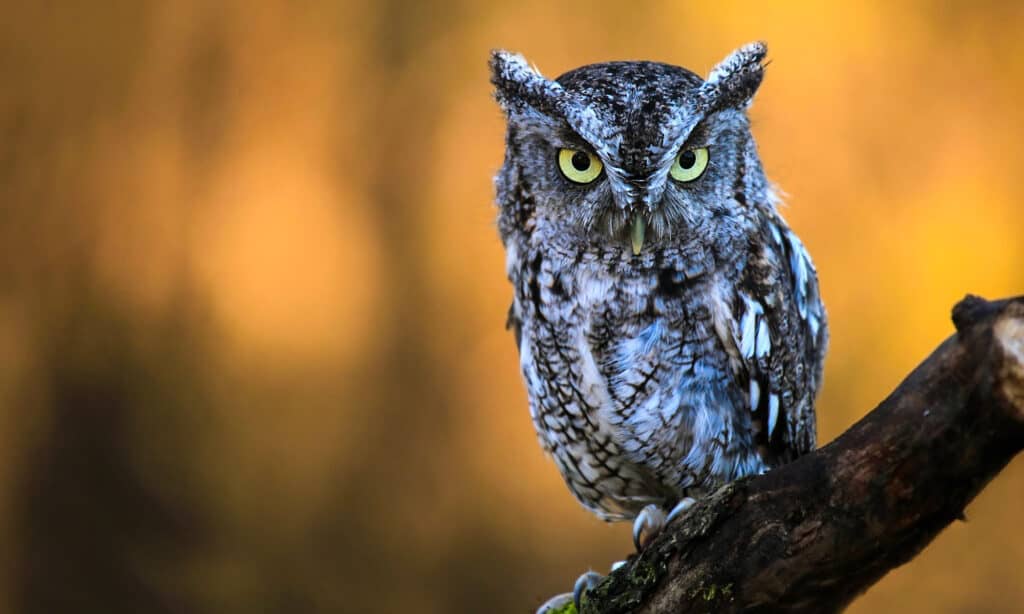
The eastern screech owl has an ongoing feud with European starlings, perhaps because of their small size. They will eat a European starling but starlings will often chase screech owls out of their nesting spots.
©mlorenz/Shutterstock.com
The eastern screech owl has a deceiving name. Its call is less of a screech but sounds more like a horse’s whinny. They are also masters of camouflage, especially if they’re gray.
You can find an eastern screech owl across the state. They prefer second growth forests, but can be spotted in urban and suburban areas, too. This non-migratory type of owl is also known to make their home in a nest box.
Barred Owl (Strix varia)
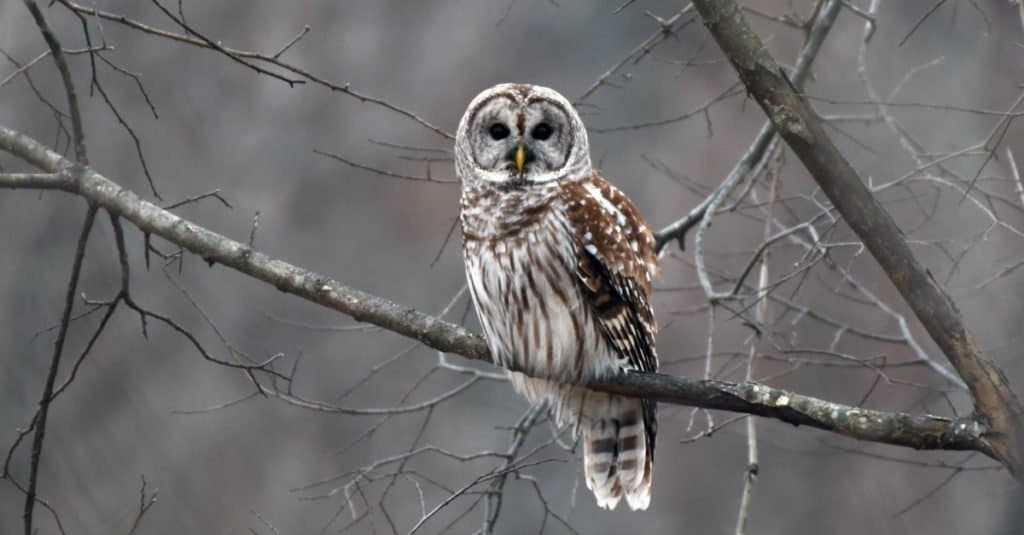
Similarly to other types of owls, the female
barred owl
is typically larger than the male. The male, however, has a lower-pitch hoot.
©Malachi Ives/Shutterstock.com
Considered a hoot owl, you can hear the barred owl’s call both during the day and night. It has the well-known call that sounds like someone saying, Who cooks for you, who cooks for you all?
Because they’re active day and night, the barred owl is one of the more commonly seen owls in Tennessee. They live in woodland habitats across the Volunteer State and even hunt for fish. If you’re hiking near a lake or creek, you may have better luck seeing one!
Great Horned Owl (Bubo virginianus)
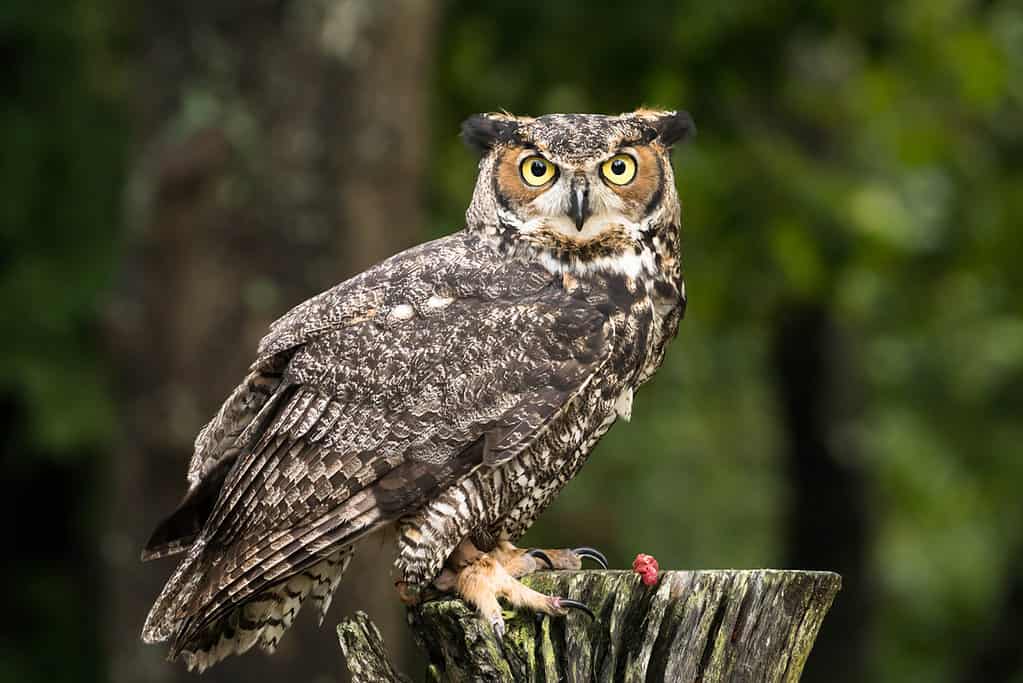
The great horned owl’s eyes cannot move, but it can turn its head in any direction to more than 180°.
©iStock.com/makasana
With its signature ear tufts and its quintessential hoot, the great horned owl is the most common in Tennessee. You may see them in different shades of brown and gray. They live statewide taking over other old raptor nests in mixed woodland areas, agricultural areas, and even in urban spaces.
| Type of Owl | When and Where Found |
|---|---|
| Snowy Owl (Bubo scandiacus) | Rare winter visitor, may appear during irruptive migrations |
| Northern Saw-Whet Owl (Aegolius acadicus) | Year-round, eastern part of the state |
| Long-Eared Owl (Asio otus) | Rare winter visitor, statewide |
| Short-Eared Owl (Asio flammeus) | Winter to early spring, statewide |
| Barn Owl (Tyto alba) | Year-round, statewide (threatened species) |
| Eastern Screech Owl (Megascops asio) | Year-round, statewide |
| Barred Owl (Strix varia) | Year-round, statewide |
| Great Horned Owl (Bubo virginianus) | Year-round, statewide |
Owls in Tennessee: Conclusion
There are 19 types of owls that live across the U.S. Eight of those live in Tennessee. So if you’re a local looking for a nearby adventure or traveling from away, keep your eyes — and ears — open for any signs of one of these owls!
The photo featured at the top of this post is © Alisha Bube/ via Getty Images
Thank you for reading! Have some feedback for us? Contact the AZ Animals editorial team.






